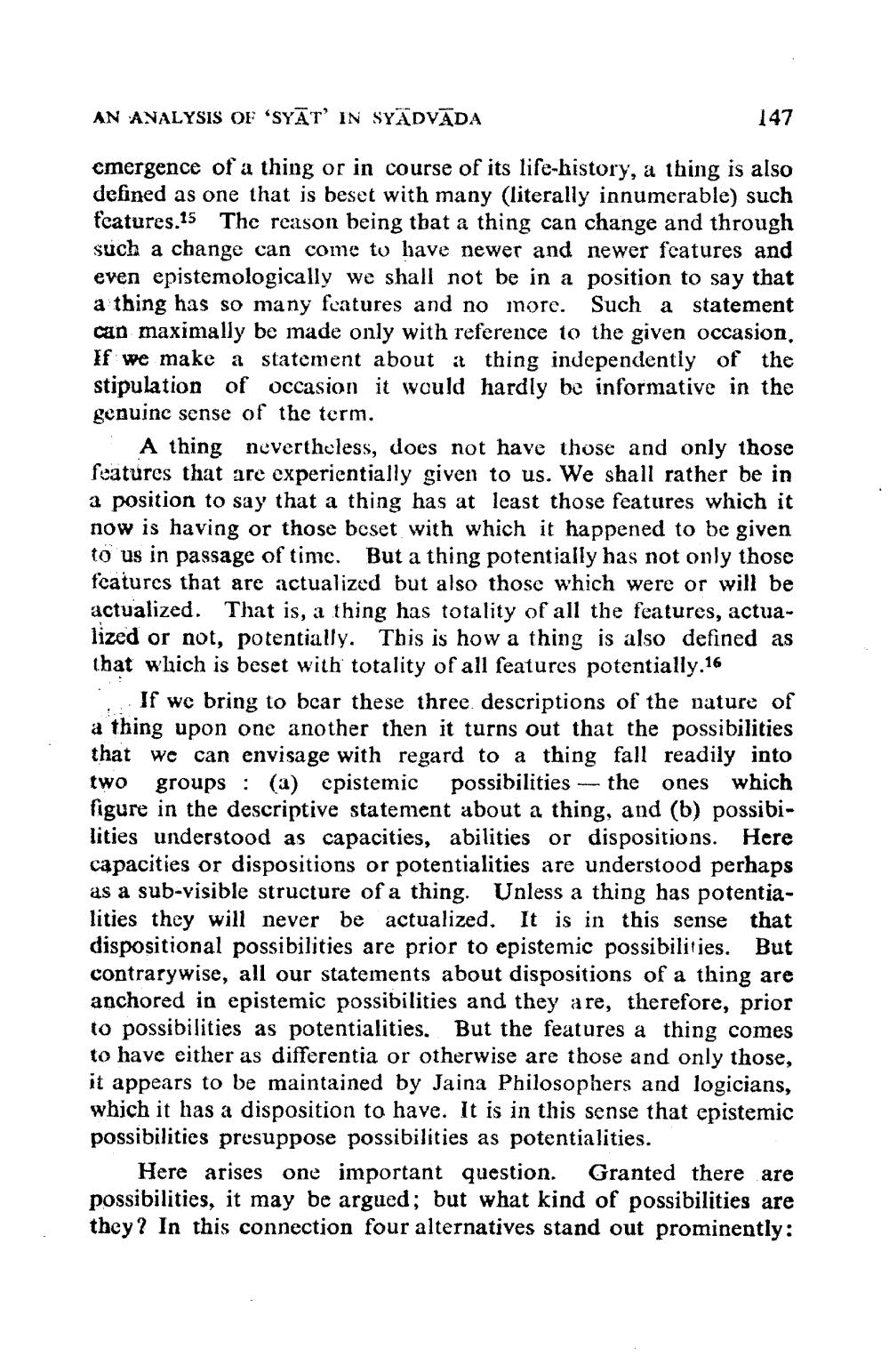________________
AN ANALYSIS OF 'SYAT IN SYADVADA
147
emergence of a thing or in course of its life-history, a thing is also defined as one that is beset with many (literally innumerable) such features.15 The reason being tbat a thing can change and through such a change can come to have newer and newer features and even epistemologically we shall not be in a position to say that a thing has so many features and no more. Such a statement can maximally be made only with reference to the given occasion. If we make a statement about a thing independently of the stipulation of occasion it would hardly be informative in the genuinc sense of the term.
A thing nevertheless, does not have those and only those features that are experientially given to us. We shall rather be in a position to say that a thing has at least those features which it now is having or those beset with which it happened to be given to us in passage of time. But a thing potentially has not only those fcatures that are actualized but also those which were or will be actualized. That is, a thing has totality of all the features, actualized or not, potentially. This is how a thing is also defined as that which is beset with totality of all features potentially.16
If we bring to bear these three. descriptions of the nature of a thing upon one another then it turns out that the possibilities that we can envisage with regard to a thing fall readily into two groups : (a) cpistemic possibilities -- the ones which figure in the descriptive statement about a thing, and (b) possibilities understood as capacities, abilities or dispositions. Here capacities or dispositions or potentialities are understood perhaps as a sub-visible structure of a thing. Unless a thing has potentialities they will never be actualized. It is in this sense that dispositional possibilities are prior to epistemic possibilities. But contrarywise, all our statements about dispositions of a thing are anchored in epistemic possibilities and they are, therefore to possibilities as potentialities. But the features a thing comes to have either as differentia or otherwise are those and only those, it appears to be maintained by Jaina Philosophers and logicians, which it has a disposition to have. It is in this sense that epistemic possibilities presuppose possibilities as potentialities.
Here arises one important question. Granted there are possibilities, it may be argued; but what kind of possibilities are they? In this connection four alternatives stand out prominently:




